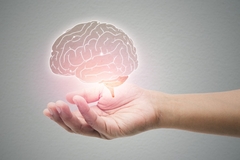Importance of Micronutrients on Fetal Development Explored Using “Human Minibrains”

13 Feb 2017 --- A new study has looked into how micronutrients and minerals play a key role during human fetal development by looking at the composition and distribution of elements in human minibrains created in the lab.
Until now, the study of nutrients in brains was restricted to postmortem or non-human tissue.
Human brain organoids - tiny tridimensional structures created from human stem cells in vitro - helped to understand the dynamics of nutrients during neurodevelopment.
Researchers analyzed human brain organoids, also known as minibrains, by synchrotron radiation, a sort of X-ray that allows the identification of the atomic composition of micronutrients. This technique consists of stimulating tissue samples in order to quantify the unique photon signature of each atom.

In doing so, they described how phosphorus, sulfur, potassium, calcium, iron and zinc are distributed during brain formation.
Simone Cardoso, Associate Professor at the Institute of Physics at Federal University of Rio de Janeiro, highlights the interdisciplinary nature of the study, which involved biologists and physicists.
“This allows us to gather a wide range of scientific expertise to plan and perform the experiments,” she says.
The minibrains were up to 45-days old, and the authors described the distribution of nutrients in two different stages of development: an initial one, of intense cellular proliferation (day 30); and at a second time point, when cells start to become neurons and organize themselves into layers (day 45).
The results show that the concentration and distribution of micronutrients are related to the stage of development and similar to previous data obtained from postmortem brain samples.
The researchers stressed how clear it was that mothers' diet during pregnancy has long-term effects on fetal development, and how the observed nutrients are essential for the appropriate formation of the brain.
The lack of some of them during prenatal development is also related to memory deficits and psychiatric disorders, such as schizophrenia.
“This study reinforces how important minibrains can be as a model to investigate several aspects of brain development”, says Stevens Rehen, the principal investigator of the study and a researcher working at the D' Or Institute for Research and Education (IDOR) and at the Institute of Biomedical Sciences at Federal University of Rio de Janeiro in Brazil.













